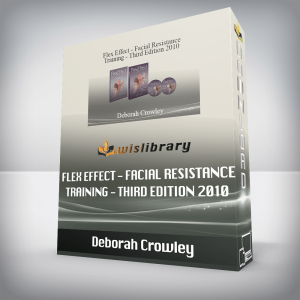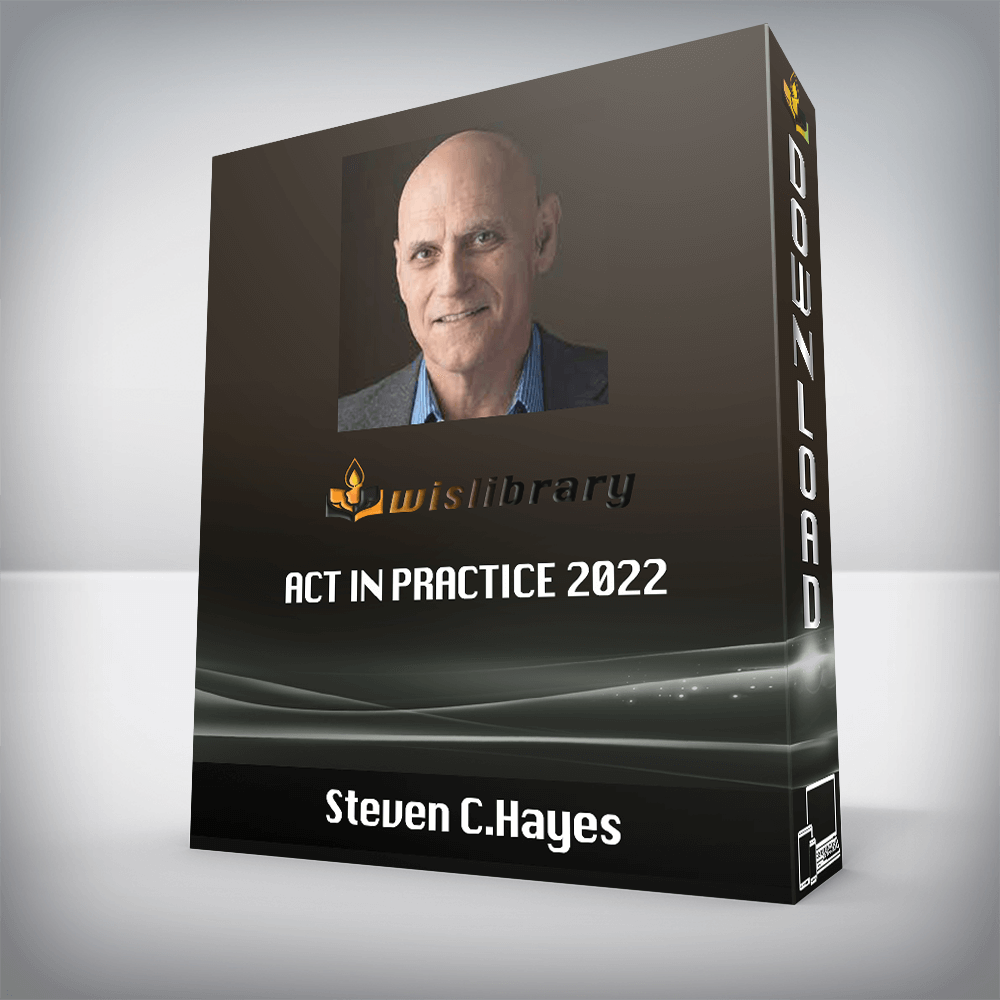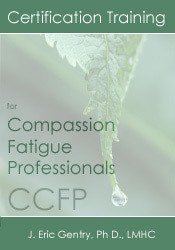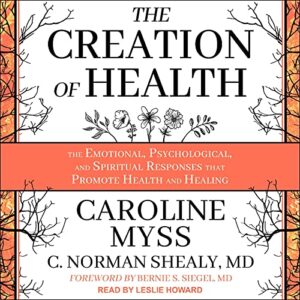In targeting the six core processes that underlie human behavior, it gives us the ability to address a vast range of problems and help almost any client.Steven C.Hayes – ACT in practice 2022Confidently Apply ACT from Intake through TreatmentCreate a guiding framework for effectively usingacceptance and commitment therapy to cultivate lasting changeAIP_Logo_Black@2xFrom the desk of Dr. Steven C. HayesReno, NevadaDear friend,By any standard, practitioners have a tough job.Working in close quarters with human suffering — especially today — is an undeniably challenging task.But in return we get to be part of something uplifting:Helping others pivot toward purpose, experience, and life.We’ve seen how acceptance and commitment therapy (ACT) can help us with this undertaking.By allowing us to foster better therapeutic relationships, ACT makes our work even more engaging and meaningful.In targeting the six core processes that underlie human behavior, it gives us the ability to address a vast range of problems and help almost any client.And the best part is: we see that it works.We see it in the person who chose to enjoy life while living with an irreversible physical ailment, or the client who found the courage to change careers late in life, or someone who finally faced their anxiety in order to be present for their family.Having a hand in that success is not only an immense privilege, but an empowering experience.But for many practitioners, these seamless, dramatic triumphs are rare.Far more common are moments of uncertainty, when progress has stagnated and turning principles into transformation feels beyond reach.2_Steven_re-launchThe Gap between Theory and PracticeIt’s one thing to know the ACT model and its principles in the abstract.It’s another to implement them in a way that’s impactful and organic, especially when you’re sitting across from a challenging client and the clock is ticking.With clients who seem disengaged and resistant to change, or cling to goals of diminishing “bad†feelings, the way forward is often unclear.In these scenarios, the theory might make perfect sense to practitioners conceptually . . .But when it comes to applying ACT, they’re less confident.Self-doubt creeps in, and they hesitate to make their next move, questioning if it’s the best one to guide the client toward meaningful progress.And unlike the masterful sessions clinicians see in workshops, many of them instead share experiences like the following:They work comfortably with acceptance and defusion, but struggle to find the right exercise to target self-as-context, so avoid it in sessionsThey sometimes feel like teachers instead of therapists, relying on lecturing to introduce concepts instead of weaving experiential exercises naturally into sessionsThey feel stuck when it comes to challenging clients, unsure of how to move forward or make their sessions as valuable as possibleThey hesitate to push certain clients to engage with difficult thoughts or feelings for fear of demotivating them further, but end up on different pages about their therapeutic aimsThey approach sessions with rigid ideas about what should happen next rather than being able to respond flexibly to the momentExperiences like these are surprisingly common among ACT practitioners.Even skilled clinicians can feel uncertain when tailoring treatments for particularly difficult clients — especially without resorting to cookie-cutter interventions.But why is this the case, when we know the model and have seen it work?The answer goes beyond simply practicing more of the same, into something at the heart of this method.The ACT Therapeutic ParadoxThe very triumph of ACT has been in moving us away from strict protocols into a new, broader tradition.At the same time, this presents clinicians with an interesting paradox:On the one hand, this broadening of our scope is liberating. It lets us tailor our approach to people and underlying processes rather than going blindly “by the book,†crossing our fingers, and hoping that what we’re doing will work.On the other hand, it can leave us feeling lost. Without protocols, how do we skillfully dial in the theoretical model to fit the needs of a particular person, in a particular moment, in the context of their overall therapy?Knowing how to do that is not obvious.It’s a high-level skill — especially when it comes to complex cases.This conundrum raises a somewhat surprising question:Is there a formula for applying ACT?It makes sense that when faced with a lack of direction, we, as evidence-based practitioners, reach out for a formula for applying ACT.We look for things to replicate word for word, situation for situation.Yet, for the very same reason that we moved away from protocols in the first place, a formula for therapy won’t help us achieve better outcomes.Instead of a formula for applying ACT, we need tools for creatively translating it into effective interventions.Fortunately, with a set of newly expanded tools that I’m about to introduce, we can create a guide for using ACT effectively with clients while maintaining the flexibility this method was designed to provide in the first place.In many ways, this has been the goal of evidence-based therapy since the beginning. And now, it’s finally coming to fruition.AIP_6_Steven_DesktopA Framework for Putting Theory Into ActionIn recent work, my colleague Dr. Stefan Hofmann and I have refined certain conceptualization and treatment methods and put them into a process-based application framework.Using these tools, we can understand our clients more deeply throughout the therapeutic relationship, from an ACT perspective.And, most importantly, we can more easily find opportunities for intervention.To help us organize this perspective, we can use a modified version of client-based network diagramming.AIP_23_Diagram_II@2xNetwork diagrams allow us to gain a holistic understanding of a caseUsing network diagramming as a foundation, we can perform a process-based form of assessment to flesh out the relationships between case features in a way that shows us how and why pathologies are retained within a specific context.We can also use this analysis to identify where processes of change overlap with maladaptive behavior patterns.This process helps us see what we should target for long-term success and map out a plan to do so, again using network diagramming to organize the strategy.Together, the tools within this new framework allow us to develop a clearer understanding of client cases and execute effective, tailor-made therapies — all in a way that’s firmly grounded in ACT principles.4_Steven_re-launchHow a Process-Based Framework Helps You Apply ACT More Effectively1. It helps you think flexibly instead of linearlyHuman lives are not composed of a few events laid out in a linear fashion. So despite our best efforts, approaching therapy in that way can lead to a dead end.Still, linear thinking is so ingrained in our training and culture that a flexible approach can feel abstract if it is not guided by practical tools.With the tools inside our process-based framework, we can instead see how underlying processes cause behavior to reinforce and amplify itself in loops.For example, suppose you have a client who has gradually had her life shrink due to chronic pain following an injury at work and resulting over-use of opiates. It is easy to focus on her pain and how her use of opiates has led to a growing addiction.However, the linear sequence of injury → pain → opiate use may block out other important case features, such as how the injury impacted her financial stability, or how her father’s Alzheimer’s has fed fear and fusion in her life.AIP_22_Diagram@2xNetwork diagrams allow us to clearly visualize behavior patternsBy using this framework to gain a non-linear perspective of a client’s case, you can develop a more nuanced understanding of their behavior and make a better plan to intervene.2. It allows you to turn case complexity into opportunityWhen you’re struggling to apply ACT principles in-session, it’s difficult to know how to intervene in the moment and at the same time know that it’s tied to long-term success.A process-based framework allows you to clearly see behavior patterns within the whole context that retains them. Because of this, you will have a holistic understanding of the case and will see more opportunities to intervene if an attempt falls flat or you simply hit a wall in therapy.AIP_8_Chess@2xThis framework allows us to approach therapy strategically, like a game of chessFor example, while you may identify a crucial experiential avoidance pattern and see an opening to target it with acceptance, you’ll also see options to alter that same core patterns using other processes.This framework also allows you to see strengths — instances of psychological flexibility — that you can build up as part of a holistic treatment strategy.I was recently reminded of the importance of such thinking when working with a client who found herself undermining intimacy in her relationships.By expanding the focus, I discovered a fused self-image, only noticeable at work, that she was “likely to break under pressure.†After employing self-compassion and defusion work focused on this sense of self, she was then able to work on vulnerability in relationships.In other words, this framework allows you to approach therapy like a game of chess:Instead of thinking one move at a time, you’re visualizing a way to win the whole game.3. It provides a guiding pathway for work with lasting impactRather than offering a formula or protocol, this process-based framework gives structure to therapeutic aims throughout our journeys with clients:It gives you a clearer sense of what to ask during intake to better understand a case.It allows you to map the psychological flexibility model onto case features and find the best opportunities for intervention.It helps you plan treatment based on what is most likely to work for that specific client.And even after you begin implementing that treatment strategy, it gives you a reference point to help you see when things are moving — or to make a new plan if they aren’t.This will allow you to pivot much more flexibly, and if necessary, can also help you answer the question: “What have I missed about how a certain behavior is being retained?â€I had to ask myself this very question in work with a client where I’d initially failed to think through how new actions would be self-sustained.AIP_9_Steven@2xThese processes will allow you to have a lasting impact in your work with clientsI saw values as an endpoint, missing that the client would need mindful attentional skills to know when to act on those values and to recognize progress in building values-based habits. By focusing more on attentional skills, the ability to sustain a positive outcome felt much more likely.These gaps are typically the hardest thing to see in a case, but with a process-based framework, we can more easily identify them and shift our approach.Once you understand how to use the tools within this framework, you’ll come to your very next session with a clearer pathway in your head and the psychological flexibility model built right into it.That way, you’ll be able to more strategically bring about lasting change.Learning this ApproachI hope you’re starting to understand how this expanded process-based framework can help you ground ACT theory in practical application so you can implement it more creatively, confidently, and effectively.Seeing this framework in action and practicing it yourself is the best way to learn how to apply it in your own sessions.And that’s exactly what I’m about to share with you.Below are all of the details about my online course that builds on what you already know about ACT, teaches you practical tools for applying it, and shows you how to put them to work in sessions.Inside, we’re going to bring the philosophical visions of process-based therapy down to things like how to do an intake, how to do a different kind of diagnosis, how to do a functional analysis, how to design a treatment, and how to face other challenges presented in your daily work.Along the way, you’ll learn practical skills and tools to help you more effectively bring about positive change for your clients.About Steven C. HayesDr. Steven C. Hayes, the originator of acceptance and commitment therapy and one of its key co-developers, is a Nevada Foundation Professor in the Behavior Analysis program at the Department of Psychology at the University of Nevada, Reno.His work has been celebrated with several awards, such as the Lifetime Achievement Award from the Association for Behavioral and Cognitive Therapies and the Impact of Science on Application Award from the Society for the Advancement of Behavior Analysis.With 46 books and nearly 650 scientific articles published, Dr. Hayes is one of the most cited psychologists in the world as he continues to innovate in the field of psychology.Introducing…AIP_Sales_Page_Course_Mock_Logo@2xAIP_Course Mockup@2xDeepen and empower your work in acceptance and commitment therapy with Dr. Steven C. Hayes, a visionary co-founder of ACT and the Contextual Behavioral Science movement.In this online course, you’ll gain access to a new, process-based framework designed to help clinicians who have a solid ACT foundation bridge the gap between theory and practice. You’ll watch Dr. Hayes apply this framework in extensive roleplay sessions and real plays — authentic, unscripted conversations with clinicians about their lives. And you will see his thought process from start to finish as he builds network diagrams, performs functional analysis, makes reads, and plans and implements treatment.Equipped with this insight, you’ll be able to develop a clear pathway for implementing ACT throughout your therapeutic relationships — and become more effective at cultivating prosperity in the lives of your clients.Course FormatIn this online training, you will learn about some of the most recent and important developments in all of evidence-based therapy, with an emphasis on seeing them in action so you can put them directly to use in your own practice.ACT in Practice combines video instruction and exercises with some of the most extensive footage available of an expert applying the psychological flexibility model in strategically designed roleplays and real conversations with healthcare professionals working on personal issues.In this way, the course offers both a more advanced ACT experience as well as a highly practical approach.Course content and materials are in English, and all videos will include subtitle options in English and Spanish.The example sessions were all conducted remotely, via video call. So you’ll get a chance to see how you can fully engage clients using this expanded framework, even completely online.Using tried-and-true ACT methods, such as skills exercises, alongside cutting-edge tools, you’ll learn how to gain a deeper understanding of even the most complex cases, make more accurate reads, plan targeted interventions, and apply the Hexaflex model with greater confidence and flexibility.Course StructureACT in Practice is a self-paced, entirely online course.The 10 modules will be released at a rate of one module per week so you’re able to fully absorb the material before moving on.However, you’re also welcome to work through the modules more gradually as your schedule permits. With lifetime access to all course material, you will be able to revisit it anytime in the future, including any future updates that are made to the course.The first 3 modules introduce you to a new, process-based framework that will allow you to apply ACT theory with creativity and confidence.From the very beginning, you’ll complete exercises to put this framework, and the tools within it, into practice. You’ll also watch Dr. Hayes apply it in three important stages of the client relationship: doing an intake and building a preliminary network diagram, performing a new form of process-based functional analysis, and planning and implementing treatment.In Modules 4 through 6, you’ll view roleplays with different clients covering work from all corners of the Hexaflex model and will hear Dr. Hayes explain why he made certain choices at critical moments.Module 7 will focus on how to move to any point on the Hexaflex at any moment and do effective work — even with challenging clients.In Modules 8 and 9, you’ll hone and test your skill in reading clients’ psychological flexibility, as well as in identifying the processes a therapist is targeting in session.You’ll conclude the course with Module 10 by improving your ability to discern adequate, good, and excellent ACT interventions, using Dr. Hayes’s example session for practice, which will ultimately make you more effective in your own work.In the last two modules, you’ll also benefit from the insight of Dr. Robyn Walser and Dr. Kelly Wilson, two of the world’s leading ACT experts, who collaborated with Dr. Hayes for written exercises and a point-by-point discussion of a real play. This will give you an opportunity to measure your skills more objectively while also learning from additional world-class practitioners.Throughout the course, you will develop a guiding framework and practical skills that help you:Develop a deeper understanding of your clients from the very first session, so you can plan and implement treatment more effectively with holistic aims in mindAccess a broad range of exercises, metaphors, and interventions that can help you create experiential learning in sessions rather than resorting to lecturingHone your ability to make accurate reads and identify client strengths and weaknesses as well as opportunities for meaningful workAlways have a full grasp of your client’s entire case and how issues are being retained, so you can move flexibly between processes and maintain a clear sense of directionUnderstand how to use the psychological flexibility model as a framework for incorporating other important processes and interventions in evidence-based therapyAfter completing these 10 modules, you will have the practical skills and tools to be more effective in your very next intake.CurriculumBelow is a breakdown of the main skills and tools you’ll learn within each module. Each learning unit includes video instruction, written material, footage from example sessions, and practical exercises for applying new concepts, as applicable.Module 1: Preliminary NetworkHow a process-based framework offers a better way forward than previous efforts to categorize and treat psychological disordersThe guideposts you can follow throughout the client relationship to better understand someone’s case, choose interventions, and measure outcomesStart building the practical skills needed to visualize a client’s case clearlySee Dr. Hayes’s thought process as he walks you through creating a preliminary network diagram for Mariana, a roleplay client dealing with a history of abuse and struggling to find joy and connection in lifeDraw your own preliminary network diagram based on a case study of Stan, a father experiencing debilitating anxiety that impacts his relationship with his familyModule 2: Functional AnalysisHow process-based functional analysis can help you choose treatment interventions that give you the greatest chance of successHow to measure a client’s psychological flexibility, your therapeutic alliance with them, and treatment outcomesUsing an Extended Evolutionary Meta Model to understand clients’ psychology in relation to physiological and social factorsWatch Dr. Hayes perform functional analysis of Mariana’s case by building on his preliminary network diagramTake your preliminary network diagram of Stan’s case to the next stage: creating a functional analysis diagramModule 3: Treatment PlanningTurning functional analysis into an effective treatment plan that fits with a client’s goals for therapyHow to disrupt maladaptive behavior patterns within a case and turn them into self-sustaining adaptive loops that will last even after your work with a client endsReview an emotional approach to creative hopelessness for Mariana, a strategy that can be used with clients who are resistant to changeWatch as Dr. Hayes creates a treatment plan diagram for Mariana and shares his thought processBased on your functional analysis diagram from Module 2, draw a treatment planning diagram that helps you map out impactful interventions for StanModule 4: Acceptance and DefusionIdentify reads and interventions related to emotional and cognitive flexibility (acceptance and defusion)How to target these two processes indirectly through other areas of psychological flexibility, and vice versa, opening up more options for meaningful interventionWatch a 3-part roleplay with Mariana showing key elements of the treatment plan created in Module 3Examples of how to successfully implement defusion and perspective-taking exercises, and how to repurpose pain into values-based actionModule 5: Present Moment and Self-As-ContextReview psychological flexibility reads and interventions related to touching the “now†and sense of selfHow to move these processes indirectly through other corners of the hexagon in order to expand your flexibility during sessionsView a 3-part roleplay with Sally, a client experiencing depressed mood as she flounders without a sense of purpose in retirementSee Dr. Hayes taking a psychoeducational approach to creative hopelessness within the roleplayExamples of how to successfully implement present moment exercises and the “devil’s advocate†approach to clarifying valuesModule 6: Values and Committed ActionIdentify reads and interventions related to values and committed actionHow interventions in these two areas can impact other core processes that support them, increasing your efficacy with clientsWatch a 3-part roleplay with Stan, which includes a values approach to creative hopelessnessSee examples of how to successfully implement the “advisor†values exercise and an ACT-based exposure exercise to channel anxious energy into committed actionModule 7: HexadancingHow hexadancing works and why it can be a useful approach to implementing ACTSee hexadancing used effectively in a real play session with a clinician who longs to connect more deeply with his wife and communityUnderstand the importance of extending flexibility processes out socially, and see a demonstration of how it’s possibleHow ACT work fits into the larger arc of mindfulness, acceptance-based approaches, and contemplative practiceComplete 3 exercises in which you’re presented with progressively more challenging statements from clients and must decide on appropriate ACT responses, which you can then compare with Dr. Hayes’s answers and explanationsModule 8: Practicing Reads SkillsParticipate in a classic training technique used by the original ACT founders in order to hone your ability to make accurate readsBoost your skills so you can quickly read psychological flexibility processes in the momentWatch a real play in which Dr. Hayes works with a woman experiencing excessive worry and difficulty staying in the present momentPractice reading a client’s psychological flexibility processes based on the real play transcript, and start identifying which processes Dr. Hayes is targeting and howCompare your work to Dr. Hayes’s and begin to understand your strengths and weaknesses at reading the psychological flexibility processesLearn from Dr. Hayes as he explains what he was observing and thinking during the example sessionModule 9: Reads Skills TestWatch a real play in which Dr. Hayes works with a man who feels stuck when it comes to caring for his healthAssess your skill in reading psychological flexibility processes, as well as discerning which processes Dr. Hayes is targeting, using the real play transcriptCompare your answers to those of Dr. Hayes and Dr. Robyn Walser, another premier ACT expert, to help you objectively identify areas for improvementLearn from Dr. Hayes as he explains what he was observing and thinking during the example sessionUltimately, become more proficient in making accurate reads so you can apply ACT more confidently and respond flexibly to what comes up in sessionsModule 10: Assessing ACT InterventionsView a real play in which Dr. Hayes explores the connection between loss and love with a woman yearning for freer intimacy in her relationshipsUse a therapist rating scale to score interventions within the real play for their efficacy and how well they correspond with ACT principlesReview written and audio commentary by three of the world’s leading ACT experts — Dr. Hayes, Dr. Robyn Walser, and Dr. Kelly Wilson — explaining why certain choices are (or are not) effective in a given contextHone your skill at judging the efficacy of ACT-appropriate moves, so you can finetune your own interventions and make a bigger impact as a practitionerIncluded ResourcesACT Assessment Toolkit – Dr. Hayes’s curated list of the simplest short clinical assessment tools, ready for downloading to use with clientsSingle-item Assessments – A list of single-item measures that you can download as a Google Doc and tailor to create individualized assessment questionnaires for clientsTargeted Assessment Tools – A range of tools for specific client populations and issues (e.g., cancer, chronic pain, smoking, weight issues), ready for downloading to use with clientsACT Rating Scale Training Manual – A guide to using the objective scale for rating therapist efficacy developed by Dr. Robyn Walser and Varvara MazinaCourse SampleThe example sessions filmed for the course were conducted remotely, using the most up-to-date recording equipment. This allowed us to produce the 11 hours of video instruction at the highest visual and audio quality, and with a very personal perspective, which you can sample in the following course excerpt.The video shows Dr. Hayes in his third session with a fictionalized client named Stan, who struggles with debilitating anxiety. Here, Dr. Hayes helps Stan channel that anxious energy into a way of supporting his son, so that he can be more present and achieve his goal of being a better dad.Supplemental MaterialsIn addition to the 10 in-depth course modules, ACT in Practice also includes four additional learning opportunities to help you in your journey through the course, and beyond it in your own practice.Bonus #1: Private ACT in Practice Facebook GroupThe ACT community is made up of a special group of people. Because they’ve been moved personally by the work, they’re very passionate and open, as you likely have seen for yourself at workshops and conferences.So as part of the course, we’ve put together a private Facebook Group for members. This is a space where you can bring questions or experiences, and generally benefit from community support as you move through the course and put what you learn to work in your own practice. Inside, you can get advice from other course members, share thoughts and resources, network, and be part of an ongoing discussion about ACT and how to use it effectively in the work that we do.(Note: Participation in the Facebook Group is optional and not required for course completion.)AIP_15_Bonus_1_FB_group@2x5_Bunus 2-Thumbnail_Relaunch@2xBonus #2: Integrating ACT with Other Modalities (Webinar Recording)Because ACT deals with nearly universal human yearnings, it is compatible with many other modalities. But when you’re working on complex issues, it can be challenging to effectively apply other methods to the flexibility processes.To help you find a cohesive approach, you will have access to a training session on integrating ACT with other methods for more flexible, impactful work.In the webinar, you will learn:How popular modalities like CBT, DBT, and relational psychodynamic methods can empower work on psychological flexibility, and vice versaHow to mix and match disciplines and still have a coherent approachPotential conflicts to look out for when overlapping techniquesAnd more…Bonus #3: Teletherapy Best Practices (Webinar Recording)The growing shift toward teletherapy is giving us a wonderful opportunity to expand our work. Still, there are considerations in terms of how to facilitate engaging, powerful clinical sessions across that space.In this recorded webinar, Dr. Hayes talks about what we are learning about teletherapy best practices, and how his experience making ACT in Practice taught him a few fine points.You will learn:How to navigate the unique challenges of remote therapyStrategies for increasing your own psychological flexibility around teletherapy, as well as your clients’The surprising benefits offered by this format, and how to take advantage of themAnd more…6_Bunus 3 Thumbnail_relaunch@2xAIP_Bonus_4_Thumbnail_II@2xBonus #4: Network Diagramming Q&AThe refined form of network diagramming you will learn in this course is central to successfully using a process-based framework. With network thinking, you will be able to conceptualize cases more clearly from an ACT perspective, making it far easier to understand pathological behavior in context and plan the most effective treatment for your clients.To help ensure that you can use this skill confidently, you can view a recording of a live Q&A session with Dr. Hayes where he discusses how to best utilize it specifically for the task of functional analysis. During the session, Dr. Hayes focuses on a sample case from the curriculum, and responds to questions asked by course members who built their own functional analysis diagrams for this case. With additional insight into using network thinking for process-based assessment, you will be able to gain a better understanding of behavior patterns and can more effectively bring about positive outcomes.Here’s What You’ll Get in Steven C.Hayes – ACT in practice 2022– Download Sample files “Steven C.Hayes – ACT in practice 2022â€Course Requirement: Steven C.Hayes – ACT in practice 2022Real Value: $629One time cost: USD 138Frequently Asked Questions For “Steven C.Hayes – ACT in practice 2022â€How to make payment for “Steven C.Hayes – ACT in practice 2022†?Please add to cart on this page and go to checkout page. You can also add as many other products as you like and make a one-time payment.We accept several type of Stripe payments such as Visa, Mastercard, American Express, Discover, Diners Club, Google Pay, Apple Pay and JCB, payments from customers worldwide. Paypal & Bitcoin please contact us.We strongly recommend our customers to make a payment through Stripe & Paypal . Because it is a safest and super security for you as well as for us.Is it safe?100% Secure Checkout Privacy PolicyEncryption of sensitive data and communication.All card numbers are encrypted at rest with AES-256 and transmitting card numbers runs in a separate hosting environment, and doesn’t share or save any info.How can we deliver you the course?After you pay for “Steven C.Hayes – ACT in practice 2022†on our library, please follow the download links in your account page here: |Steven C.Hayes – ACT in practice 2022|In some case, the link is broken for any reason, our supporter will renew the download links and notify to your email within a few hours business day. Your patience is appreciated.How long do I have access to the course? How does lifetime access download?After enrolling, you have unlimited download to this |Steven C.Hayes – ACT in practice 2022| for as long as you like – across any and all devices you own.How to download “Steven C.Hayes – ACT in practice 2022â€?Enjoy “Steven C.Hayes – ACT in practice 2022†in your account page.Download only one file at a time. Sometimes doing all of the files at once will lead to them all freezing.Also, please do not attempt to download to a mobile device. These should be saved to a computer and then synced to devices such as phones and tablets.You can also learn online instead of downloading, but we encourage you to download for better results and viewing quality during your learn. Lastly, download times are much quicker in the mornings, before noon, Pacific time. during download make sure your device is not sleeping off screen.What is the refund policy “Steven C.Hayes – ACT in practice 2022â€?We’ll Bear The Risk, You’ll Take The Results…Within 30 days of purchased |SSteven C.Hay
 Dr. Sue Morter – Anatomy For Embodiment 2022
₹14,608.00
Dr. Sue Morter – Anatomy For Embodiment 2022
₹14,608.00
 Deborah Crowley – Flex Effect – Facial Resistance Training – Third Edition 2010
₹3,320.00
Deborah Crowley – Flex Effect – Facial Resistance Training – Third Edition 2010
₹3,320.00
Steven C.Hayes – ACT in practice 2022
₹22,908.00






